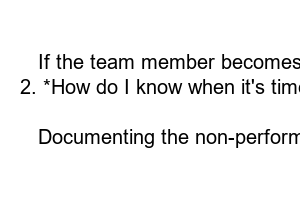무실적 부가세신고 방법
**How to Report Non-Performance in English**
Are you facing a situation where a team member or colleague is not pulling their weight? It can be frustrating and challenging to know how to address this issue effectively. In this blog post, we will discuss step-by-step guidelines on how to report non-performance in English, ensuring that your message is clear and professional.
**Identify the Issue**
Before reporting non-performance, it is crucial to first identify the specific issue at hand. Is the team member missing deadlines, failing to meet expectations, or not completing tasks as assigned? Understanding the root cause of the problem will help you address it more effectively.
**Gather Evidence**
To support your report of non-performance, gather evidence such as missed deadlines, incomplete tasks, and any communications or feedback related to the issue. Having concrete examples will strengthen your case and make it easier to address the problem with the individual in question.
**Schedule a Meeting**
Once you have identified the issue and gathered evidence, schedule a meeting with the team member to discuss their performance. Be sure to choose a private and neutral location where you can have a candid conversation.
**Communicate Clearly and Professionally**
During the meeting, communicate your concerns about the team member’s performance in a clear and professional manner. Avoid using accusatory language and instead focus on specific examples of non-performance and the impact it has on the team or project.
**Agree on Solutions**
Work together with the team member to identify potential solutions to improve their performance. Setting clear goals, providing additional training or resources, or adjusting expectations can help the individual address the issue and improve their performance moving forward.
**Follow Up**
After the initial meeting, follow up with the team member to ensure that they are making progress towards their goals. Providing ongoing feedback and support will help the individual stay on track and continue to improve their performance over time.
**Summary**
Reporting non-performance in English can be a challenging task, but by following these step-by-step guidelines, you can address the issue effectively and professionally. Remember to identify the issue, gather evidence, schedule a meeting, communicate clearly, agree on solutions, and follow up with the individual to ensure progress. By handling non-performance issues with care and professionalism, you can help your team or project succeed.
**FAQs**
1. *What if the team member becomes defensive during the meeting?*
If the team member becomes defensive, try to stay calm and redirect the conversation back to specific examples of non-performance and potential solutions.
2. *How do I know when it’s time to escalate the issue to a higher authority?*
If the team member fails to improve their performance despite your efforts to address the issue, it may be time to escalate the matter to a higher authority for further action.
3. *Is it necessary to document the non-performance issue?*
Documenting the non-performance issue and any conversations or meetings related to it can help provide a record of the situation and support any further actions or decisions that may be necessary.

